Best Motion Sensor Security Cameras
Featuring activity zones to reduce false alarms and smart detection to ignore pets, SimpliSafe’s cameras only alert you about real threats.
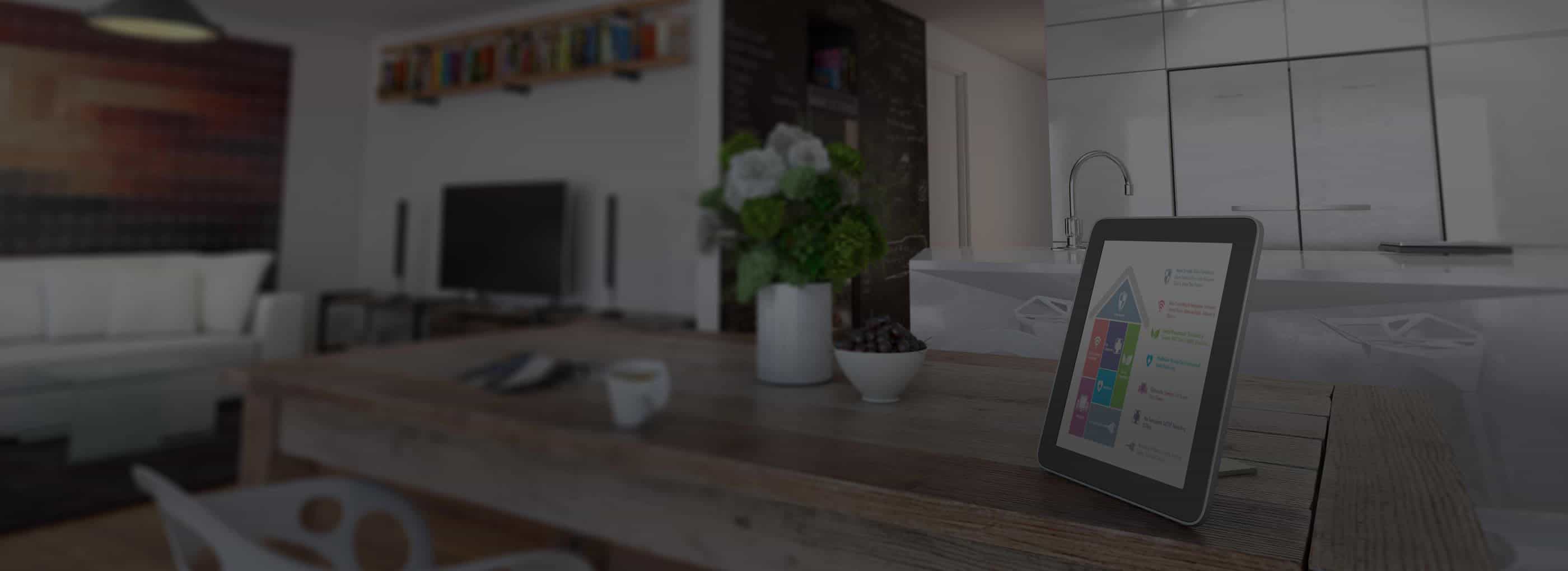
SafeHome.org may receive compensation from some providers listed on this page. Learn More
We may receive compensation from some providers listed on this page. Learn More

SimpliSafe’s Wireless Indoor Camera and Outdoor Camera let you set up activity zones to block out irrelevant activities like people walking their dogs or ceiling fans in the living room. You can even add family and friends to its recognition library so they’re not identified as potential threats.

The new Google Nest Cams that ADT offers have built-in facial recognition capabilities that can power useful automation features. ADT’s Trusted Neighbor feature takes full advantage of this allowing you to create custom rules based on who’s at the door.

Known for their well-built, well-designed equipment, Lorex leads the industry in terms of motion-detection cameras. With a deep bench of security cameras suited, Lorex is a great option when you need to keep an eye on things.
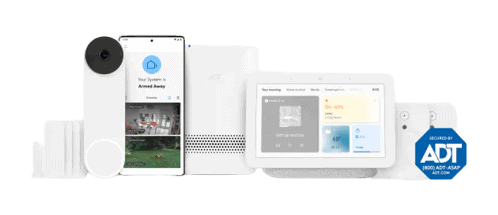
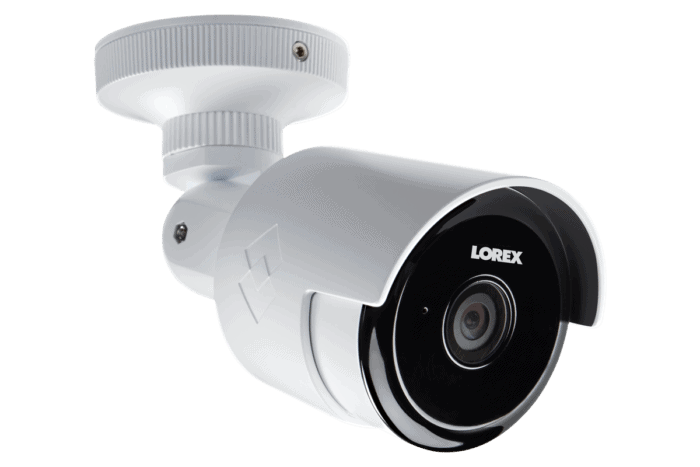
Editor’s Note: If you're serious about securing your home, we recommend getting a comprehensive home security system with integrated cameras for better protection. Find the best package deal on our best home security systems page.
Security cameras are our eyes at home, but what good are those eyes if they don’t notice intruders? That’s why we recommend cameras with motion detection. Not just any motion detection. Not just any motion detection, though. We prefer AI-powered people detection at a minimum. We also think it’s better if the camera can react to movement and use smart deterrence features like built-in lights, sirens, and two-way audio.
Here's our lineup of security camera brands that offer the best motion detection, led by SimpliSafe. We appreciate its live monitoring features, which allow SimpliSafe's agents to access your camera and actively deter criminals. We also recommend ADT and Lorex, among others, depending on your specific security needs and budget.
We think motion detection plays a vital role in a good security camera setup. To find the best systems, our team spent three months testing cameras from top brands in real-world conditions. We didn't just read spec sheets. We installed these cameras in our homes, ran detection tests day and night, and simulated intrusions to see how well they performed.
Our testing period lasted over three months, and we focused it on more than just motion detection. In fact, we looked at three specific criteria:
Looking at those criteria, and by going through the buying and installation process, we feel that we’ve accurately gauged each brand we recommended on this list. Add to that our decades of home security experience, and you’ll find the most comprehensive guide on the internet. We’re not just giving out general advice though. As you read through our list, you’ll find cameras tailored specifically to your security needs.

With the right monitoring plan in place, SimpliSafe’s security cameras can provide total protection to your home’s interior and exterior. The company's Intruder Intervention and Active Guard Outdoor Protection features leverage AI for motion detection, plus live agents who can intervene in real-time when there's a potential threat.
SimpliSafe doesn’t offer professional installation, but its systems are so easy to set up that anyone can do it. During our SimpliSafe tests, we managed to get everything up in less than 30 minutes. It helped that the Wireless Indoor Camera is, well, wireless. Installation was basically just setting it on our mantle.
The outdoor camera wasn’t quite so easy to install, but SimpliSafe has been at this for a long time, and with a basic mounting kit and clear instructions, the whole process was fast and easy.
Setting up Activity Zones was just as easy with the SimpliSafe app. Perfect, since this feature helped us significantly reduce false alerts. We live on a busy street, so we excluded everything outside of our front fence. By default, the camera ignores pets, and you can add regular guests to a facial recognition library, which cuts down even further on notifications.
Pro Tip: We recommend adding people to your recognition library so that the Intruder Intervention and Active Guard Outdoor Protection features don’t flag them as threats. Without this step, SimpliSafe agents might send the police.
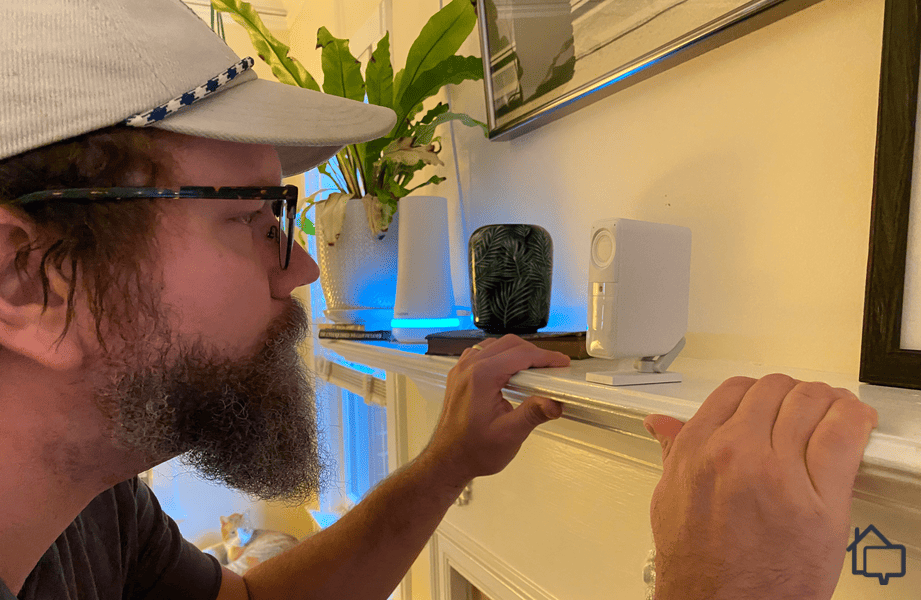
Our Wireless Indoor Camera knows who we are which is why the privacy shutter is closed.
You need a SimpliSafe professional monitoring plan to access these features. The Core Plan, just $32.99, includes Intruder Intervention, cellular backup, and 30 days of cloud storage.
For Active Guard Outdoor Protection, you need the Pro Plan at $49.99. That’s on par with ADT’s professionally installed packages. The main difference is that SimpliSafe agents are trained to actively deter intruders while contacting authorities, whereas ADT primarily focuses on dispatching authorities.
>> Keep Reading: SimpliSafe 2025 Packages and Pricing
| Connectivity | Wi-Fi |
|---|---|
| Power | Battery |
| Field of View | Up to 140° |
| Resolution | Up to 1536p |
| Storage | Cloud |
| Smart Platform Compatibility | Alexa and Google Home |

There are many reasons why ADT has thrived in the home security industry for over 150 years. Everything from the equipment to the installation to the optional professional monitoring is premium quality. Combined with Google Nest cameras, you get one of the most reliable security solutions around.
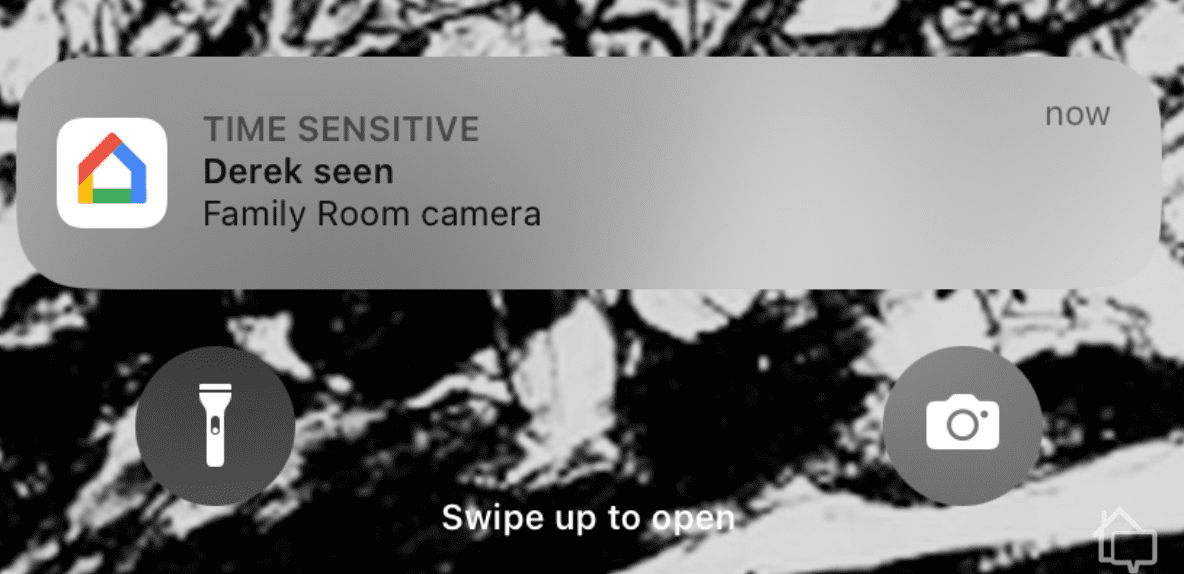
The Google Nest Cams we bought with our ADT security system sent us alerts telling us who they saw.
ADT is becoming more DIY all the time. All of the company’s equipment can be self-installed, for instance, and the process is almost as easy as that of SimpliSafe. All in all, the ADT system we tested took about 45 minutes to install. We should point out that we didn’t purchase a Google Nest Cam with floodlight. That’s the one ADT device that requires an electrician.
While other cameras on this list offer facial recognition, no one does it better than ADT. The Trusted Neighbor feature automatically grants access to friends and family when they approach your house. You can even activate it at scheduled times. We configured our system to let our dog walker enter every Thursday at 10:30 AM. It’s easy to see why ADT ranks among the best smart home security systems.
>> Learn About: ADT Self Setup Review and Pricing Plans in 2025
FYI: The ADT monitoring plan that supports security cameras includes a Google Home Premium subscription. This unlocks all capabilities of your Nest Cams and cloud storage for up to 30 days of video events. They also include an hour of internal backup storage, so if your internet goes down, your cameras keep recording footage.
| Connectivity | Wi-Fi |
|---|---|
| Power | Wired and battery |
| Field of View | Up to 135º |
| Resolution | 1080p |
| Storage | Limited local, cloud included |
| Smart Platform Compatibility | Alexa and Google Home |


Lorex offers an extensive selection of options, such as bullet cameras, pan-and-tilt cameras, PoE cameras, indoor cameras, and outdoor cameras. Trust us, it’s normal to feel overwhelmed by the choices initially. No matter which one you choose, they deliver reliability with cutting-edge features across the board.
We could write an essay about Lorex’s vast camera lineup. Even though all Lorex cameras offer motion detection, we recommend their active deterrence cameras, like the H30 series. They include AI-powered person detection to identify potential threats, and activate a siren and built-in spotlight to scare intruders away.
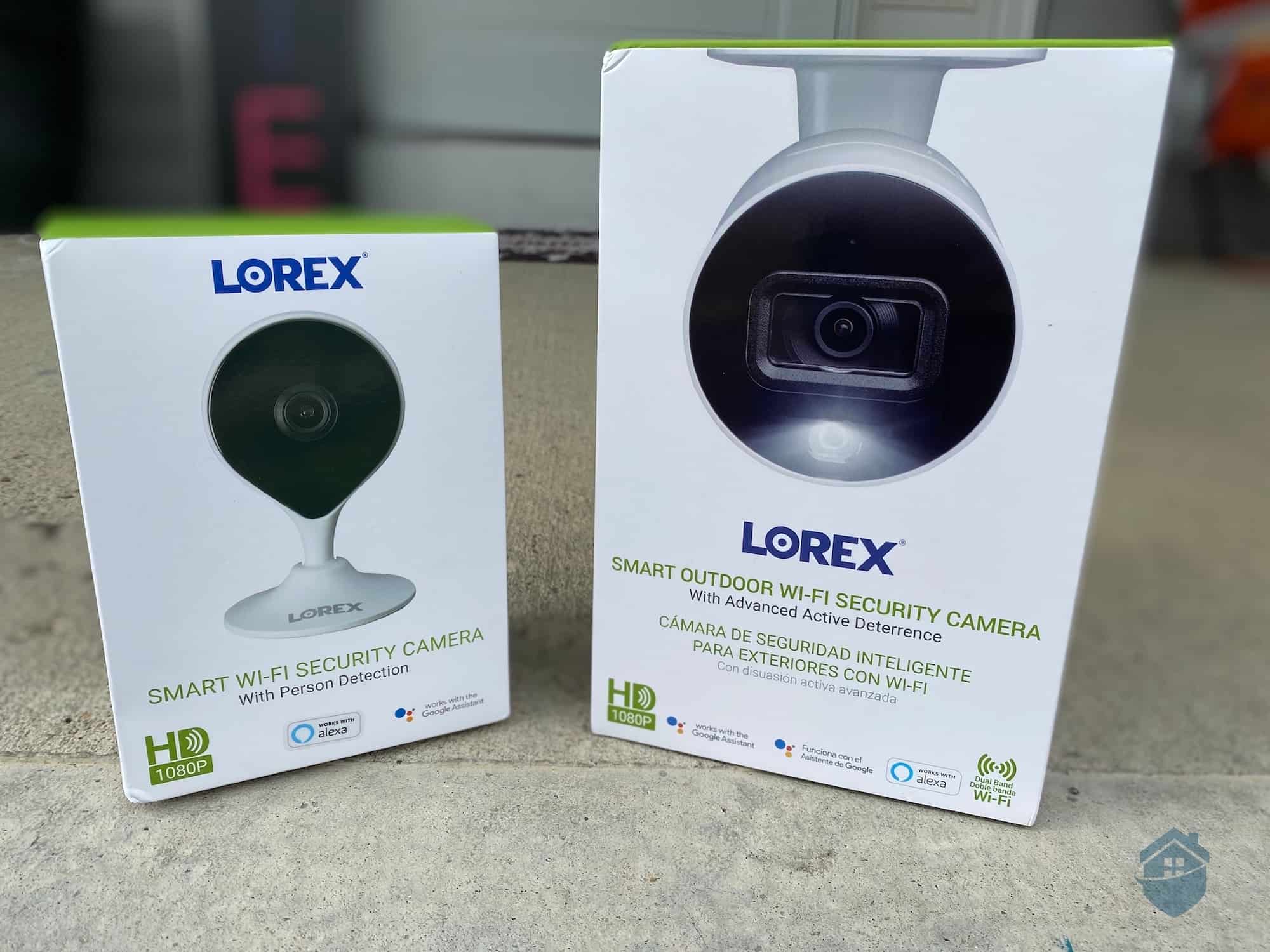
Both of our Lorex cameras feature motion detection, but we preferred the outdoor camera with active deterrence.
Even limiting yourself to active deterrence cameras, Lorex still provides dozens of options. It might seem excessive, but we appreciate the range of options. For instance, you could choose a single standalone cloud-compatible camera or build a commercial-grade multi-camera system.
Plus, Lorex makes it easy to self-monitor your system. During our testing, we got real-time alerts as well as access to both live footage and recorded footage. That’s right, we had playback options without having to sign up for a cloud storage plan. Lorex actually offers several different local storage systems, including DVR, NVR, and microSD cards.
With such an extensive inventory, you can always find a Lorex camera that suits your price range. For more, check out our list of Lorex’s prices and products.
| Connectivity | Wi-Fi, Ethernet, or PoE |
|---|---|
| Power | Wired, battery, or PoE |
| Field of View | Up to 180° |
| Resolution | Up to 4K |
| Storage | Free local, optional cloud |
| Smart Platform Compatibility | Alexa and Google Home |


All Google Nest cameras feature advanced motion detection capabilities, such as facial recognition. After testing various facial recognition cameras, including one from Lorex, we found Google was the most accurate. The only requirement is a Google Home Premium subscription that starts at $10 per month or $100 per year.
Google sells just three Nest cameras: the wired indoor Nest Cam, the battery-powered indoor/outdoor Nest Cam, and the wired Nest Cam with Floodlight. All three come with advanced AI that not only improves security but simplifies home monitoring.
All three cameras include people detection. That cuts down on false alerts, making it easier to pay attention to each alert you receive. Google Nest Cams can send even smarter alerts with facial recognition. We had to teach our cameras to recognize our friends and neighbors, but after a couple of months, it was surprisingly reliable.
This impressive technology comes at a price. Cameras start at $99.99, double the price of Ring’s entry-level camera. You’ll also need a $10 to $20 per month Google Home Premium subscription for facial recognition and extended cloud storage. We still think it’s worth it.
Check out our Google Nest Cam review to get the full scoop on our live Nest tests.
| Connectivity | Wi-fi |
|---|---|
| Power | Wired |
| Field of View | Up to 130° |
| Resolution | 1080p/2K |
| Storage | Cloud |
| Smart Platform Compatibility | Alexa and Google Home |


All of Ring’s cameras feature AI-powered motion detection to cut down on false alerts. They also offer four different models with built-in lighting, the Ring Spotlight Cams and the Floodlight Cam. Outdoor illumination enables color night vision, enhances motion detection at night and can scare off would-be home invaders.
Ring cameras don’t include facial recognition, but they still have an accurate People Only Mode. That prevented us from receiving a notification every time our neighbor’s cat sunbathed on our front porch. If our cameras sent all those notifications, we’d start ignoring them, which would leave our home vulnerable.
To cut down on false alerts even further, Ring offers customized motion zones. We set ours to avoid the neighbor’s yard. There’s also a scheduling feature we used to turn off motion detection every Tuesday morning at 5 a.m. when the street sweeper comes by.
When we did receive alerts from Ring, reviewing the footage was simple enough. The app automatically trims video clips and attaches them to alerts so we can quickly access the relevant footage. This helps make decisions faster.
Want to know more? Check out our Ring Cam analysis for a complete review.
| Connectivity | Wi-fi, ethernet |
|---|---|
| Power | Wired, battery, PoE |
| Field of View | Up to 140° |
| Resolution | Up to 4K |
| Storage | Cloud |
| Smart Platform Compatibility | Alexa and Google Home |


Every Arlo camera offers smart motion detection with people, pet, vehicle, and package detection. We think their weather resistance is what really makes them stand out. All of Arlo's outdoor cameras come with an IP65 weather-resistant rating. This means they still work in temperatures from -4°F to 113°F and withstand rain, snow, and dust. While testing Arlo cameras, a huge blizzard hit our house with a foot of snow. Through it all, our Arlo cameras kept working.
Arlo home security cameras come with solid motion detection. Their other strong selling point is their ability to withstand the elements. After all, motion detection won’t get you much if your camera goes down the moment you’re facing a serious snowstorm. How do we know? While were testing out an testing Arlo cameras, a nasty blizzard came knocking. We weren’t exactly prepared – that kind of weather isn’t the norm where we live. Our Arlo camera was ready, though. We’re not saying we could make out as many details in a snowstorm as we could on a sunny afternoon, but the image was just as clear.
Computer vision motion detection, which is what Arlo uses, works best with high resolution. That gives the algorithms the most data to work with when deciding if the moving object is a person or a pet. At a minimum, Arlo offers a 2K variant of all its cameras, and we recommend them for more accurate alerts. Our Arlo price guide covers all the prices of the 2K versions.
We like Arlo’s sleek, modern designs. Nobody wants an eyesore of a security camera dominating their home’s entrance. That might be the optimal location, though. With stylish cameras, you can install them without fear of disturbing your home’s curb appeal.
| Connectivity | Wi-fi, Ethernet |
|---|---|
| Power | Wired, battery, PoE |
| Field of View | Up to 180° |
| Resolution | Up to 2160p |
| Storage | Cloud |
| Smart Platform Compatibility | Alexa and Google Home |


Blink offers reliable, budget-friendly security cameras. Despite the low prices, these cameras pack serious motion detection capabilities. In our own Blink system review, we focus on Blink’s powerful motion sensors, its outstanding video quality, and its adjustable sensitivity settings. But oh yeah, you can usually find these cameras priced at around $50, so they’re also eminently affordable.
It’s easy to get caught up in all the amazing high-tech that’s making its way into the home security industry these days. We confess, we’re sometimes guilty of focusing on facial recognition software and geographic triggers to the exclusion of more important camera features like field-of-view and resolution. Reviewing Blink always reminds us that a security camera’s first job is to provide clear images of what’s going on at your home. Blink does that amazingly well, and it does it at a price that makes home security affordable for any family.
Don’t underestimate Blink cameras. They feature dual-zone motion detection and know the difference between a person and a vehicle. This significantly reduces false alerts, which ultimately keeps you safer. Too many false notifications can desensitize you to real threats.
With Blink, though, you get features like enhanced motion detection at an affordable price. No camera in Blink’s inventory costs more than $130. While advanced features are nice and can add convenience, we don’t think trading extras for affordability is a bad deal. Here’s the current breakdown:
| Blink Camera | Regular Price |
|---|---|
| Blink Outdoor 4 | $79.99 |
| Blink Outdoor 2K+ | $99.99 |
| Blink Mini Pan/Tilt | $39.99 |
| Blink Mini 2 | $39.99 |
| Blink Mini 2K+ | $49.99 |
| Blink Outdoor 4 Floodlight | $99.99 |
| Blink Wired Floodlight | $99.99 |
| Connectivity | Wi-fi |
|---|---|
| Power | Battery |
| Field of View | Up to 143° |
| Resolution | Up to 1080p |
| Storage | Cloud |
| Smart Platform Compatibility | Alexa |


Kuna is perhaps the most unique entry on this list. The company sells home security cameras, and those cameras include solid motion sensor technology. The thing is, the cameras are combined with outdoor light fixtures. Lenses are disguised; they don’t look like cameras. The average guest isn’t going to notice them. Neither is the average home invader, so you can catch would-be burglars completely unaware. Plus, they’re pretty stylish. Choose between a high-tech floodlight or an old-fashioned Dickensian lantern. Both contain sensors that can detect motion up to 70 feet away.
Like most of the cameras on this list, Kuna cameras know the difference between human and other types of movement, which means you have fewer false alerts to deal with. In addition, they’re smart enough to differentiate between people, pets, vehicles, and packages. This means you can set them to screen out movement that’s less important to you. We get a lot of packages, so we don’t want to know every single time one arrives. On the other hand, if you’re expecting an expensive laptop, you probably want a notification the very instant it arrives on your porch.
Kuna claims that its cameras will eventually be able to recognize burglars solely based on their physical movements. Apparently, thieves move differently from the rest of us. We’ve seen AI do some pretty amazing things, so maybe? The important point is that you won’t have to purchase a new Kuna camera to take advantage of evolutions like these. According to Kuna, your cameras should grow and develop over time. The longer you have them, the more they improve – pretty unusual in the home security market.
We don’t mind Kuna’s unique approach to home security, but we do wish the company offered a few more options. Two models isn’t a lot to choose from, and Kuna doesn’t make any indoor cameras at all. Still, during our Kuna camera live testing, we were impressed by just how many features the company includes in these devices. When our camera picked up motion on the front porch at 2 am, for example, we had the option to shine a light on the situation. Turns out, a neighborhood possum was making its rounds, but once our light came on, it sauntered on its way. Alternatively, we could have kept things on the DL and simply checked out the footage. We like a home security company that lets us decide how to respond to events.
| Connectivity | Wi-fi |
|---|---|
| Power | Wired, battery |
| Field of View | Up to 155° |
| Resolution | Up to 1080p |
| Storage | Cloud |
| Smart Platform Compatibility | Alexa and Google Home |
Since it’s really the backbone of any security camera, you’re going to want a camera with effective motion detection. The most common motion sensor we see in cameras is a passive infrared (PIR) sensor, which detects heat (infrared energy) that humans and animals release from their bodies.
You can’t have truly effective motion detection without decent night vision in today’s security cameras. Have a look at what we discovered when we installed a Ring Floodlight Camera in our backyard:
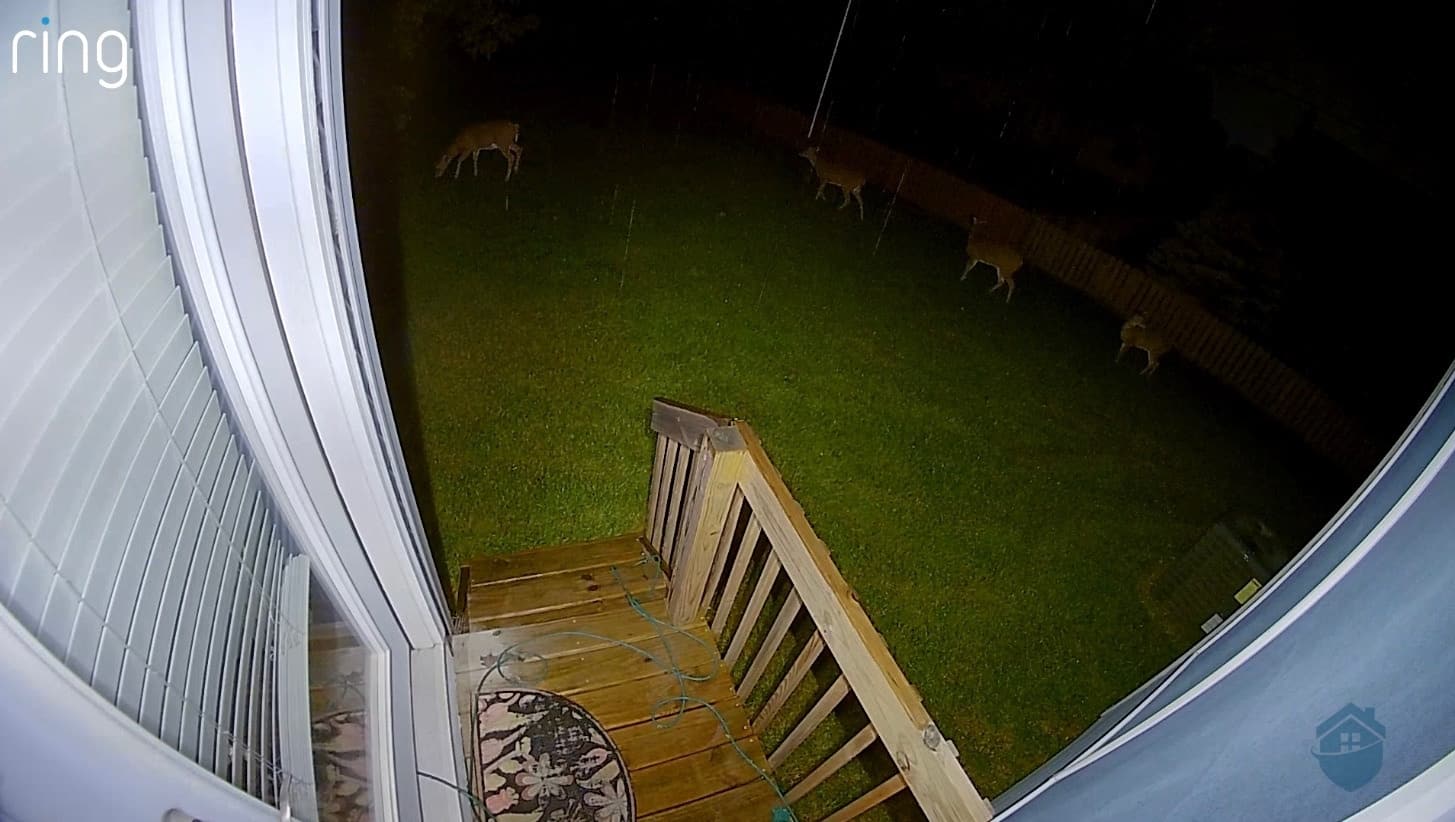
A family of deer travels across our property.
Not every camera out there has color night vision, though, so you might not get crisp images like this in every motion sensor camera. Arlo’s cameras have full color night vision, too, but you do get what you pay for with those, and the price is not necessarily cheap.
Every security camera comes with an app these days – as an iPhone user, we’ve found that they’re by and large easy to use across most brands. The best apps we’ve used present the camera’s motion detection features in an intuitive, logical way, so when we check on what time our kids’ school bus arrives, it takes us just a swipe or two to locate the footage.
FYI: We’ve identified the highest-rated home security cameras and ranked them on performance, features, pricing, ease of installation, and more. Check out our top-rated security cameras to find the perfect match.
The majority of security cameras, under the most ideal conditions, will record video at 1080p HD resolution. You’ll see it most often when your Wi-Fi signal is running at full strength.
But getting the best motion detection from your cameras doesn’t necessarily require a high video resolution, so remember that a super or ultra HD resolution (2K or 4K) camera like the Arlo Ultra 2 or Arlo Pro 5S might not detect motion any better than, say, a 1080p Blink Outdoor cam.
Another important component of motion-sensing cameras is the viewing angle, or field of view. This, in layman’s terms, is the angle between the two horizontal edges of the camera’s display.
The smaller the view, the less motion you’re going to capture from your camera. This is a crucial thing to consider in cameras, as not all viewing angles are the same. Ring’s 110-degree Indoor cam, for example, won’t get you the same viewing possibilities as the E1 Outdoor, one of Reolink’s cameras. With PTZ action, you can stretch out that view to a whopping 350 degrees.
With smart home automation features, security cameras are now functioning less as standalone devices and more like components in a larger smart home setup. For the most part, security cameras today are compatible with at least two smart home platforms. Usually, that’s Amazon Alexa and Google Home.But many other cameras, including Zmodo’s super affordable cameras and Swann’s NVR-based systems, are compatible with Z-Wave, Apple HomeKit, IFTTT, and other smart home ecosystems, too.
FYI: Our comprehensive Home Automation Guide has lots more information on integrating cameras into your smart home.
So what have we learned? First, while all motion sensors work the same way in principle, when you put them into security cameras, there’s sometimes a huge difference in quality. The technology you pack in there with the sensor translates what the sensor sees and what it does with that information can be impressive or just ho hum.
While our favorite motion sensing security cameras come from SimpliSafe, it’s not going to be the best solution for everyone. When you add in factors like camera placement, storage options, and video quality it can get complicated sorting out who’s the best. We’re confident, though, that the camera that’s right for you is somewhere on this list.